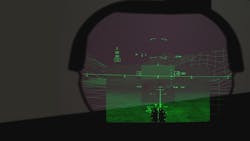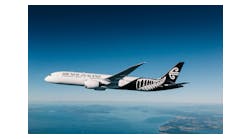Vū Systems is launching Vū Cube, the world’s first passive millimeter wave (PMMW) sensor for aviation, set to significantly reduce delays and increase airport capacity by giving pilots unparalleled visibility in adverse weather conditions.
The patented Vū Cube sensor is the only product on the market that uses PMMW technology to allow pilots to see through heavy clouds and thick fog at two miles or more; enabling continuous and reliable take-off and landings in extreme low-visibility weather, including zero-zero conditions.
Stedman Stevens, chief executive officer at Vū Systems, says, “Following the implementation of the FAA’s new Enhanced Flight Vision Systems (EFVS) rule in 2018, aircraft equipped with qualifying sensors, like the Vū Cube, have the opportunity to obtain authorization to take-off and land in conditions approaching zero visibility. Our Vū Cube sensor can effectively see through fog, clouds and low ceilings, providing a significant visual advantage to pilots that is measured in miles, rather than feet.”
Nick Sabatini, Vū Systems’ consultant and former FAA associate administrator for aviation safety, adds: “As the FAA focuses on the modernization of US airspace through the NextGen program, safety and efficiency remain the top priorities for aviation today. The potential of Vū Systems’ EFVS breakthrough technology is game-changing; providing major economic benefits to operators, pilots, airports and the industry as a whole, by eliminating the multi-billion-dollar global problem of low-visibility weather delays and improving flight safety.”
Randy Bailey, flight deck interface technologies lead at NASA Langley Research Center says: “At NASA, we have been evaluating the use of an electronic means of vision in lieu of a pilot’s natural vision, opening up the possibility of new far-ranging aviation operational concepts such as take-off and landing in low visibility conditions without elaborate and expensive autopilots and airport instrument landing systems and lighting. Enhanced flight vision systems using millimeter wave technologies are a key component of this work, providing a real-time sensor component that can penetrate weather and visibility obscurants superior to that of infrared sensors.”
Jeff Hausmann, director of advanced flight deck at Gulfstream, a business-jet manufacturer with extensive experience introducing new flight-deck technologies, says: “We continually seek new technologies that will extend our leadership position in the business jet market. Having flown the NASA simulation of millimeter wave based EFVS, we see the opportunity to improve access to airports globally in low visibility conditions without regard for ground-based equipage. This technology has the potential for Visual Flight Rules operation in Instrument Flight Rules conditions.”





